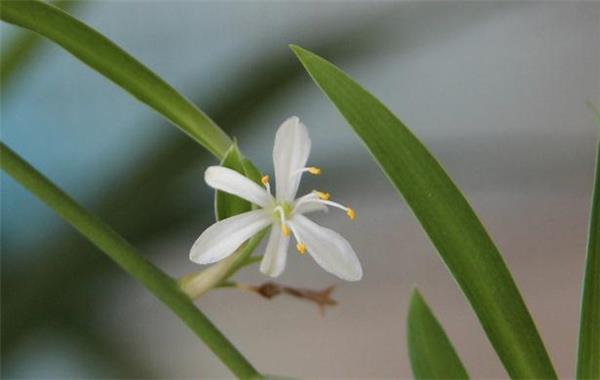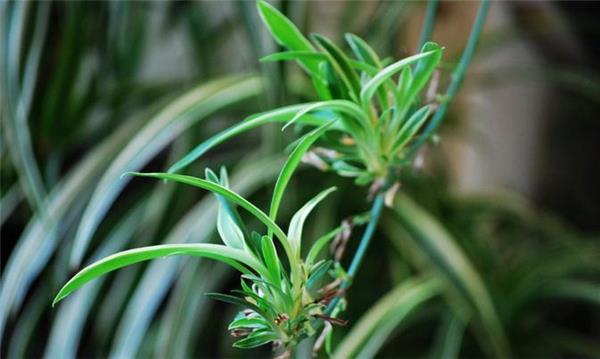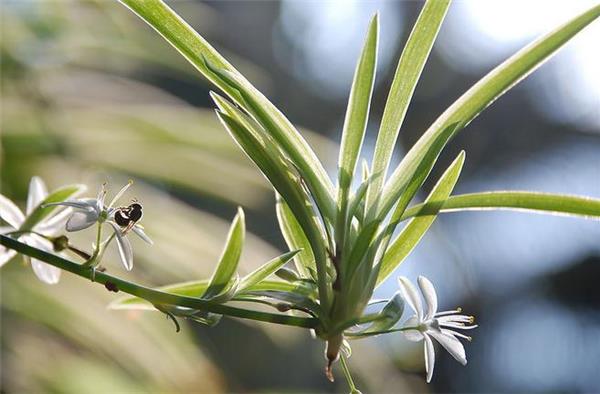[maintenance of hanging orchids] how to maintain hanging orchids
Many friends do not have a special understanding of the maintenance methods of hanging orchids, and there are always some problems when raising hanging orchids. So, how should the hanging orchid be maintained? Next, let's take a look at it.

The function of hanging orchid
When it comes to the role of hanging orchids, it is really too big. The orchid can absorb more than 80% of the harmful gases in the room, absorb 86% of the formaldehyde, and absorb all the carbon monoxide and nitrogen peroxide emitted by stoves, electrical appliances and plastic products. For us in modern urban life, we often face the radiation emitted by all kinds of digital products. If we put one or two pots of orchids next to us, the poisonous gases in the air will be absorbed, which is equivalent to an air purifier. Therefore, the hanging orchid is also known as the "green purifier".
Types of hanging orchids
Golden leaf orchid
Gold leaf hanging orchid is generally divided into Phnom Penh hanging orchid and gold heart hanging orchid, the former has yellow lines around the green leaves, a bit like a frame, the shape is unique and very good-looking; hearing its name, the golden orchid knows that the center of the leaf is yellow longitudinal stripes, looks exquisite and atmospheric, is now the largest variety on the market, hanging on the wall is a good choice.
Magnolia lanceolata
The species of silver leaf orchid and gold leaf orchid are the same, there are silver orchid and silver orchid, silver stripes around silver orchid look elegant and clean, can purify people's mind; silver orchid leaves in the middle, branches and leaves are not separated, leaves drooping, leaves show dark green, blooming in June and July every year, the flowers are yellowish and white. The white center stripes make the eyes look more bright and distinctive.

Maintenance method of hanging orchid
1, change the soil and change the basin: the basin hangs the orchid. In order to have luxuriant stems and leaves, the soil should be changed and the basin should be changed once in March every year. If the basin is deeper and the base fertilizer is more sufficient, the basin can be changed once every two years. When turning the basin, knock the plant out of the basin, cut off the withered roots and excess roots, replace it with a new humus-rich culture soil, and then apply livestock hoof horns or rotten cake fertilizer as base fertilizer. After planting, put the seedlings in a warm and semi-overcast place. The optimum growth temperature of Cymbidium is about 25 ℃. After the plant returns to robust growth, hang the flowerpot under the eaves of the corridor or in an appropriate position in the room. The general height is not to meet, and should pay attention to ventilation.
2. Watering: the hanging orchid likes the humid environment, and the basin soil is easy to keep wet. However, the hanging fleshy root can store a lot of water, so it has a strong ability to resist drought, and it will not dry to death without watering for several days. Below 5 degrees in winter, less watering, basin soil should not be too wet, otherwise the leaves are easy to yellowing.
3. Fertilization: liquid fertilizer is applied every two weeks in the growing season. Flower and leaf varieties should apply less nitrogen fertilizer, otherwise the white or yellow markings on the leaves will become less obvious. Stop fertilizing when the ambient temperature is below 4 degrees.

4. Diseases and insect pests: there are few diseases and insect pests in Cymbidium, mainly physiological ☆ banning ☆ disease, leaf tip yellowing, so fertilizer and water management should be strengthened. Check regularly and wipe off the shell insects and whitefly on the leaves in time. Cymbidium is not easy to suffer from diseases and insect pests, but if the basin soil is stagnant and poorly ventilated, it will not only lead to rotting roots, but also may cause root rot, so attention should be paid to spray control.
5. Lighting: hanging orchid likes semi-overcast environment and can be cultivated in bright indoor all the year round. Cymbidium cultivated outdoors can also grow well in strong direct sunlight in summer. However, hanging orchids cultivated indoors should avoid strong direct sunlight and cover 50% to 70% of the sun.
6. Pruning: cut off the yellow leaves at any time. The basin can be turned once a year in March to cut off the old root, rotten root and excess fibrous root. Cutting off some of the old leaves of Cymbidium in the first and middle of May will promote the germination of more new leaves and small orchids.

This is the end of the relevant introduction to the maintenance methods of hanging orchids. I believe that after reading it, we have a certain understanding of the maintenance of hanging orchids. If there are friends who want to raise orchids indoors, you can refer to the relevant knowledge points that I introduce to you.
Related
- Wuhan Hospital Iron Tree Blooming Result Was Instantly Frightened by the Gardener Master
- Which variety of camellia is the most fragrant and best? Which one do you like best?
- What is the small blue coat, the breeding methods and matters needing attention of the succulent plant
- Dormancy time and maintenance management of succulent plants during dormancy
- Minas succulent how to raise, Minas succulent plant pictures
- What are the varieties of winter succulent plants
- How to raise succulent plants in twelve rolls? let's take a look at some experience of breeding twelve rolls.
- Attention should be paid to water control for succulent plants during dormant period (winter and summer)
- Watering experience of twelve rolls of succulent plants
- Techniques for fertilizing succulent plants. An article will let you know how to fertilize succulent plants.



